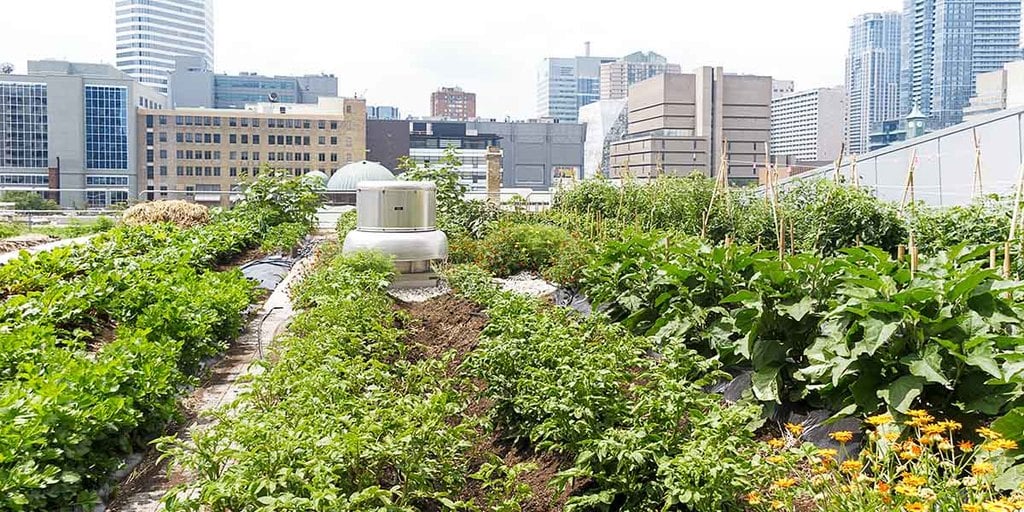Not known Details About City Blooming
Table of ContentsThe Facts About City Blooming UncoveredFacts About City Blooming UncoveredThe Only Guide for City BloomingExcitement About City BloomingSee This Report about City Blooming
Intrigued in expanding food available in the City of Chicago? Thinking of beginning an area yard? Changes to the Chicago Zoning Statute enable agricultural usages like neighborhood gardens and city farms in many components of the city. Below is a listing of regularly asked concerns concerning the regulations and guidelines that growers need to think about when planning a city agriculture task.
The zoning amendment does not customize any various other codes dealing with composting, building authorizations, purchasing or renting City owned residential property, business licenses or ecological contamination. There are existing codes that regulate these issues and they continue to be completely result and might be appropriate to your project. Neighborhood yards are generally had or taken care of by public entities, civic organizations or community-based companies and kept by volunteers.
Urban farms grow food that is planned to be sold, either on a nonprofit or for-profit basis. Due to their commercial purpose, metropolitan farms need a business license.
Little Known Facts About City Blooming.
Composting is permitted however only for plant material that is generated and used on website. The quantity of compost product can not go beyond 25 cubic lawns at any type of offered time according to the criteria in 7-28-715 of the City's Municipal Code. Yes. Since the soil at most brand-new yard sites requires changing, compost, dirt, wood chips, or various other products can be acquired to create or improve the growing room - fruit and vegtables.

If a structure permit is called for after that the hoophouse will be considered an accessory structure. You can discover more regarding the building authorization needs by contacting the Division of Buildings. The 25,000-square-foot dimension restriction is planned to avoid a solitary community yard from dominating a provided block or diminishing the block's existing property or industrial personality.
The limitation does not use to gardens found in Public Open Area (POS) areas. Can there be even more than one neighborhood yard that is 25,000 square feet on a single block? Fencing is not needed, nonetheless, gardens that have huge car parking locations may be needed to install fencing or other landscape design features.
Some Of City Blooming
B1 & B2 areas call for that all business use tasks be performed inside your home. Is fencing required for city ranches? Fences may be called for, along with landscape design and testing, for particular parking areas and exterior work or storage locations depending on location and the specific task taking area.
Urban ranches need building authorizations and zoning approvals prior to building (balcony and patio garden design). Various other types of city review may be required depending on certain structures, tasks, dimension, landscaping, licensing, public health and stormwater administration problems.
The Department of Business Affairs and Consumer Protection can aid establish the particular kind of company certificate that's needed. Off road car park is needed for most commercial projects in Chicago. The needed number of car parking rooms is based on the number of staff members functioning on site and not the square video of the growing room.
All About City Blooming

A metropolitan ranch can market garden compost material produced on site, nevertheless, the procedure must comply with the policies in 7-28-715 of the Chicago Municipal Code. Aquaponic systems are permitted inside your home on urban ranches in several zoning districts.
Up to five hives or swarms of honey bees might be maintained as an accessory usage. Beekeepers need to register with the Illinois Department of Agriculture. For even more info regarding the proposed zoning amendment you might contact the Division of Real Estate and Economic Advancement, Bureau of Planning and Zoning at 312.744.8563.
Farming in cities and metropolitan areas An urban farm in Chicago. Urban agriculture refers to different methods of cultivating. https://www.storeboard.com/cityblooming, processing, and dispersing food in metropolitan areas. The term likewise relates to the area tasks of pet husbandry, tank farming, beekeeping, and cultivation in a city context. Urban agriculture is differentiated from peri-urban agriculture, look at here which occurs in rural locations at the side of residential areas.
Facts About City Blooming Uncovered
, who look for to create social networks established on a common ethos of nature and area holism. These networks can develop by way of formal institutional assistance, becoming integrated right into local town preparation as a "transition town" motion for lasting urban growth.
In either instance, the a lot more direct access to fresh veggie, fruit, and meat products that may be become aware through metropolitan farming can improve food protection and food safety while reducing food miles, leading to reduced greenhouse gas emissions, thus adding to environment adjustment reduction. Some of the first proof of metropolitan agriculture comes from Mesopotamia.